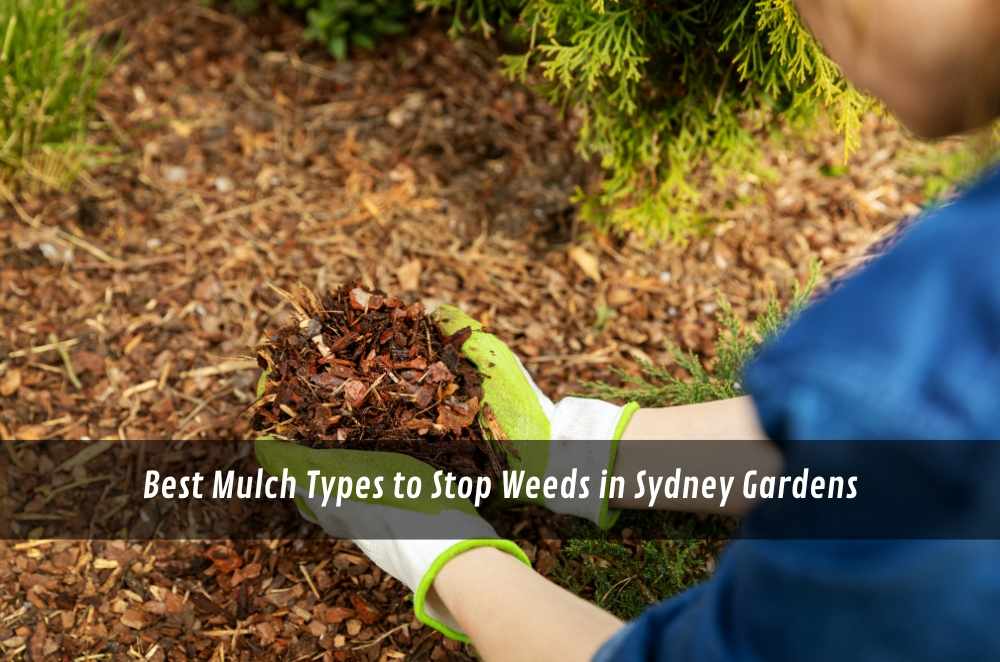
When most folks hear "mulch", they imagine steamy summer days and drought-proofing the veggie patch. But there's a lesser-known side to mulch installation — one that’s especially valuable in winter.
During the colder months, your garden may look like it’s taking a nap. Trees are bare, growth slows, and everything feels like it’s hit pause. But below the surface? A lot is still happening. Roots breathe. Soil shifts. Microbial life keeps ticking. Winter mulching helps protect and nourish this hidden system, giving your garden a head start for spring.
Think of it like layering up your soil — giving it warmth, protection, and a chance to restore itself before the new season kicks in.
Why winter is the best season to mulch
It’s tempting to hold off on outdoor work until the weather warms. But applying mulch in winter gives your garden a quiet edge. Here's why timing matters:
Soil temperature stability: Winter brings cold snaps, especially overnight. Mulch insulates the root zone, preventing abrupt temperature drops that can shock sensitive plants.
Moisture retention: Even in winter, evaporation can be a problem, especially on dry, windy days. Mulch slows it down, helping conserve precious water.
Weed prevention: Weeds love an early start. Mulch blocks sunlight from reaching dormant weed seeds, making it harder for them to sprout in late winter.
Less competition: With many gardeners waiting for spring, materials are often more available now, and labour can be cheaper if you're working with pros.
If you're in New South Wales or the southern parts of Australia, winter mulching also helps with frost protection. A consistent layer can keep soil temperatures steady enough to shield shallow-rooted plants.
Choosing the right mulch material for winter
Not all mulches serve the same purpose. In winter, you're looking for density, longevity, and insulation. Light, fluffy options tend to blow away or decompose too quickly. Instead, opt for mulches that provide structure and resilience.
Here are a few top winter mulch types I’ve used personally:
Bark chips or pine bark: Long-lasting and slow to break down, making them ideal for ornamental beds.
Eucalyptus mulch: Native, aromatic, and a great insect deterrent — plus it looks neat.
Straw or sugarcane: Good for veggie patches, especially if you’re also composting.
Composted leaf litter: Excellent for native gardens, if you want to keep things local.
Aim for a 5–7 cm layer across your beds. Any less, and it won’t do much. Any more, and you risk waterlogging or cutting off air to plant roots.
Also, don’t pile it up against tree trunks. That’s a rookie mistake. Mulch should taper off near the base to avoid rot or inviting pests.
Mulch, water, and soil — the golden triangle
One of the hidden perks of winter mulching is the way it enhances water retention in the soil. With winter rains being less predictable, especially in urban areas affected by runoff, mulching helps keep moisture where it belongs — in the ground.
Here’s how it works:
Rain hits the mulch rather than compacting exposed soil.
Mulch slows water evaporation, allowing it to seep down gradually.
The soil stays moist for longer, even on windy or sunny winter days.
Over time, as the mulch breaks down, it also improves the soil’s structure and ability to retain moisture naturally. That’s a big win for plants come spring, especially new plantings that need a strong, well-hydrated foundation.
When should you lay mulch in winter?
The ideal time to mulch in winter is after you've done some prep. I usually do mine in mid-June, once I’ve pruned back dead growth, cleared away leaf litter, and lightly aerated the topsoil.
Doing it early means your garden stays clean, protected, and low-maintenance for the rest of the season. Plus, if we get one of those early-spring heatwaves (and let’s face it, they’re more common these days), your soil will already be ahead of the curve.
Think of it like meal prepping for your plants — one session of mulching in June or July saves you a stack of time and effort in September.
A winter-ready mulch checklist
If you're not sure where to start, here's a quick checklist I use every June:

This approach sets your garden up for a smoother, healthier transition into spring. It’s beneficial if you’re planning new plantings, as a well-prepped bed can make all the difference in early root development.
DIY or call in help?
I’ll be honest — I tried to mulch my yard solo one winter. It started out great, but six bags, two wheelbarrows, and one slipped disc later, I realised it wasn’t the best use of my weekend.
There’s genuine value when you hire a professional gardener, not just in terms of time, but in results. Professionals know how to select mulch for your soil type, apply it at the correct depth, and factor in drainage and pest management — all things that can easily be overlooked in a DIY job.
Take your outdoor care up a notch
The shift toward intentional, seasonal gardening is a response to unpredictable weather patterns and tighter household water usage. That’s where professional gardening services come in. They don’t just tidy up your garden — they improve its long-term resilience.
In my own garden, a team suggested a mix of coarse and fine mulch to get better coverage and water flow. I wouldn’t have thought of that, but the results were clear — fewer weeds, richer soil, and far less maintenance through spring.
Final thoughts: Small habit, big payoff
Mulching in winter isn’t just a maintenance task — it’s a quiet, strategic investment. One that builds healthier soil, protects your plants, and makes your life easier come spring. Whether you’re managing a small backyard patch or a sprawling landscape, the benefits are the same: less work, better growth, and smarter use of the season.
So, before winter fully sets in, take the time to mulch. It’s one of the simplest things you can do — and one of the most effective.








Write a comment ...